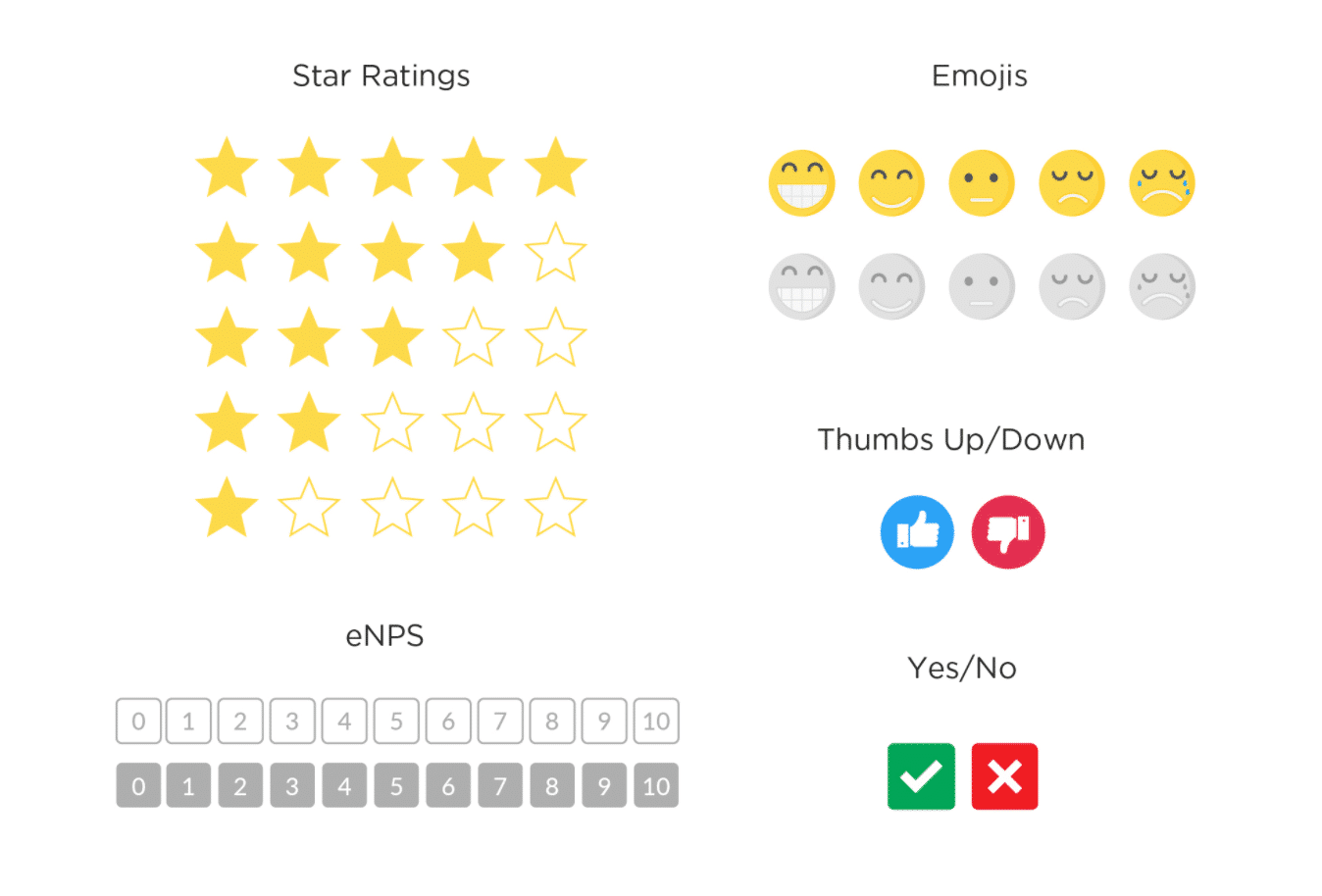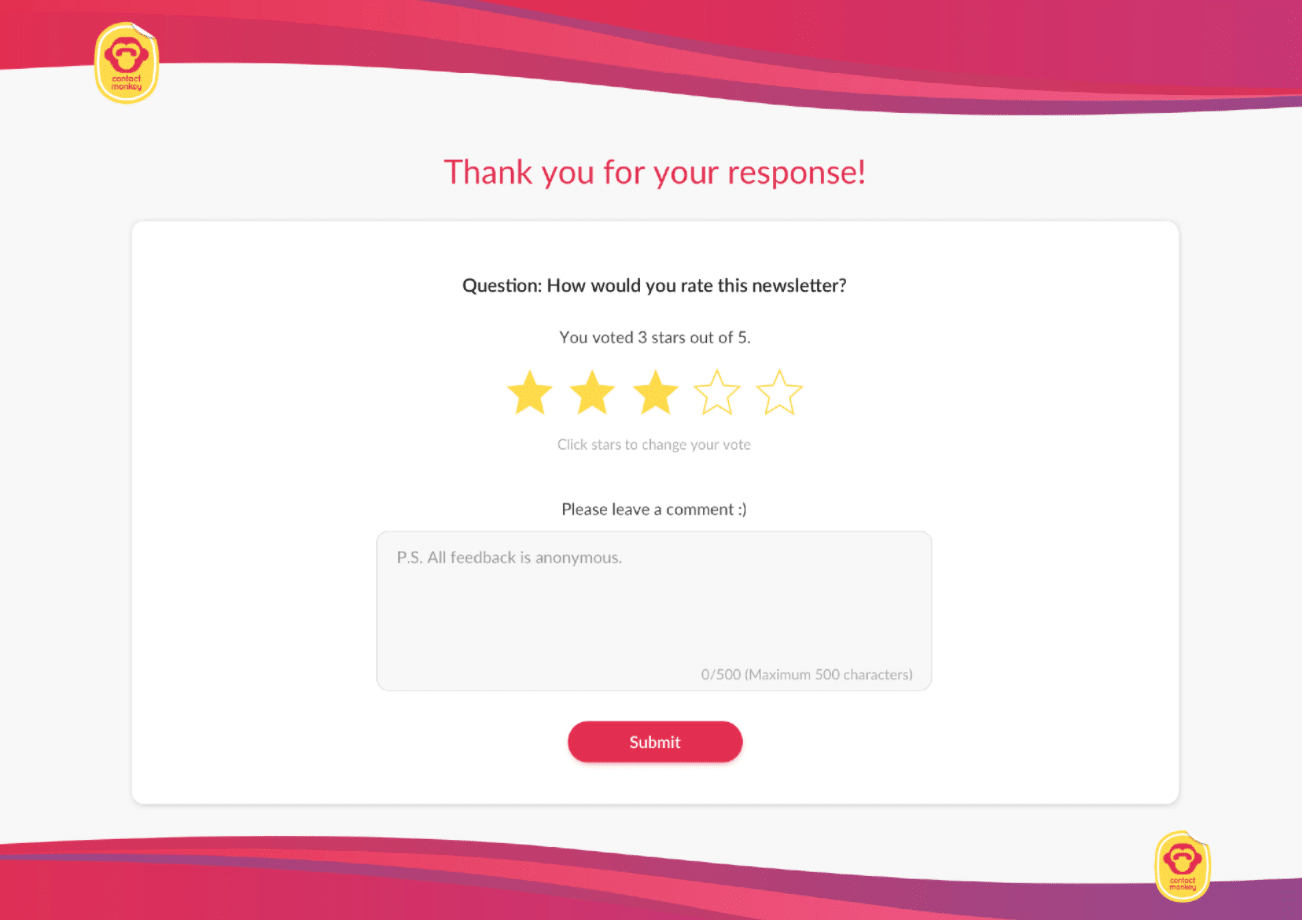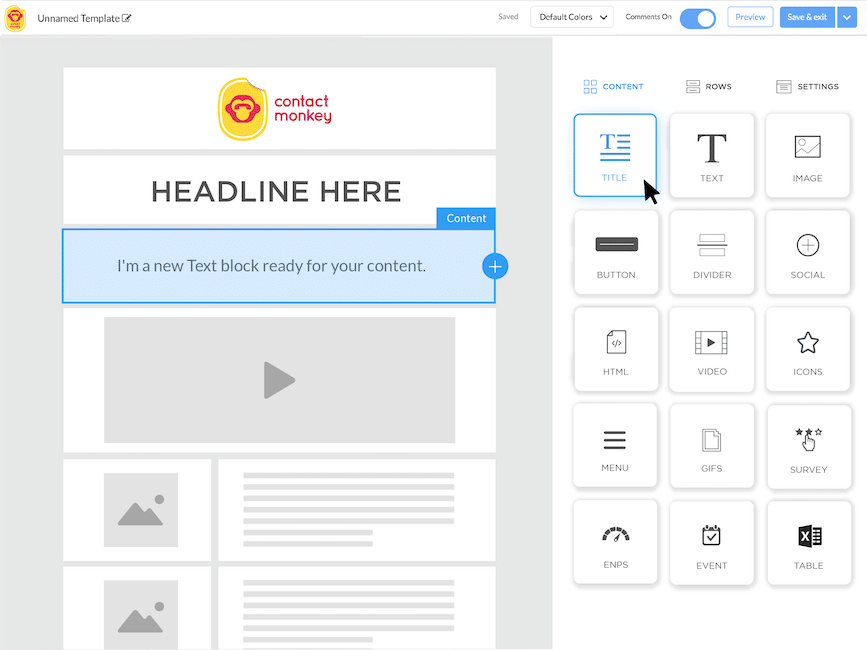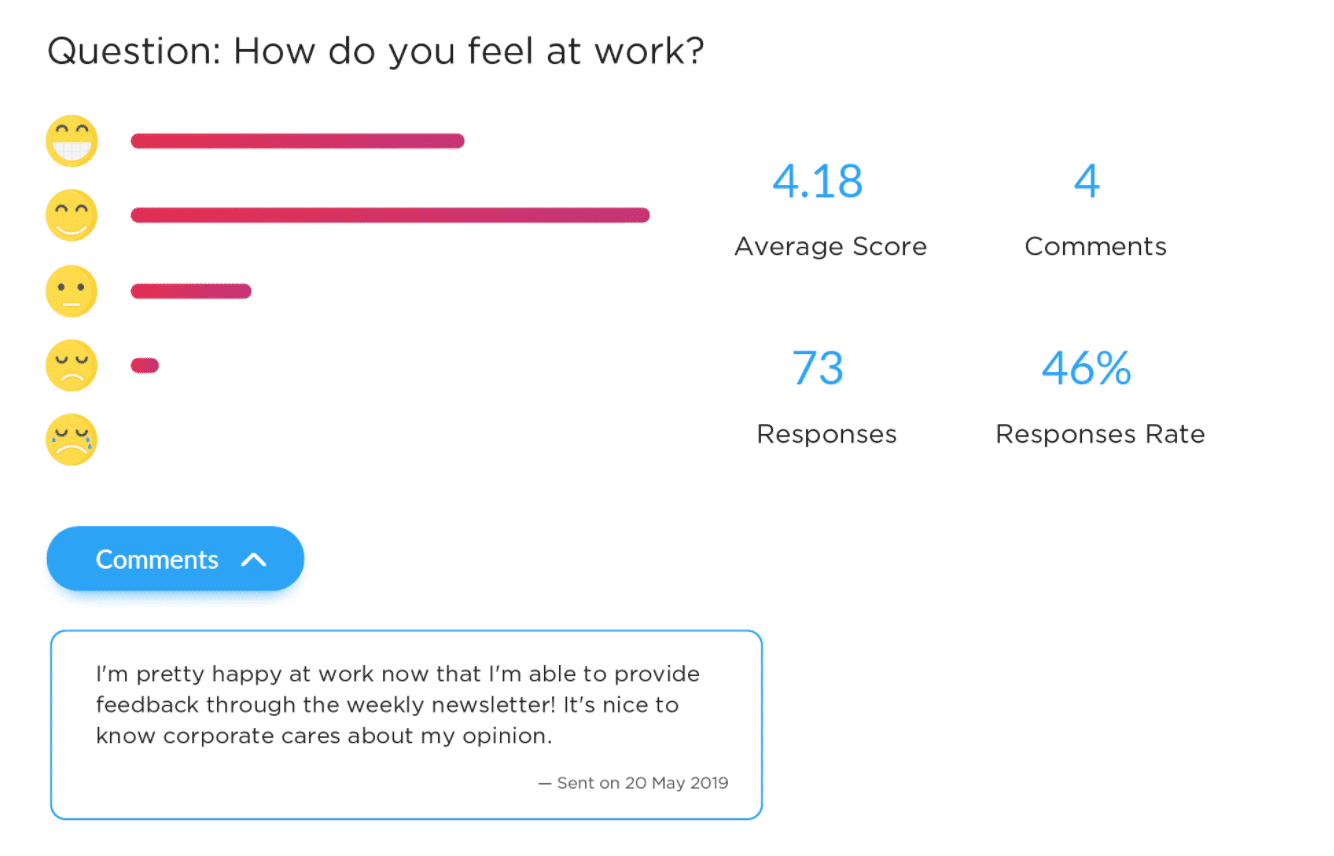Business leaders know that the key to productive employees is high levels of quality engagement and low levels of miscommunication.
However, with so many channels criss-crossing each other, your business’s internal communications can quickly become a confusing cacophony of information rather than a smooth path to communication and connection.
The first step to solving this problem is to engage your employees with a communication survey. By having your staff audit your existing communications processes, you can identify bottlenecks and supercharge team workflows.
Read on to discover how you can use employee communication surveys to improve your internal communications and drive productive team collaboration and better communication.
What is a Communication Survey?
Communication surveys are a prime way to connect with your team to understand how internal communications function.
Focusing on employee experience in your communication channels, these surveys help in identifying backlogs and bottlenecks as well as highlighting where communication is flowing well.
Once you know what you have, you can focus on fine-tuning. Since your team consists of those most affected by poor communication, an internal communication survey jumps to the heart of the problem.
Productivity rises by a quarter when employees feel connected; a communication survey serves to show that you’re invested in your staff’s connection.
By ironing out bottlenecks and kinks, you can improve the quality of communications. With a communication survey, you can find out how to achieve this — directly from the horse’s mouth.
With ContactMonkey’s employee survey templates, you can quickly gather feedback on the ups, downs and bottlenecks of your internal communications. With multiple response features like star ratings, eNPS and anonymous comments, you’ll be able to gather feedback with pulse survey questions with ease.
Check out how seating brand Exemplis increased employee engagement with a communication survey:
As you can see, staff at Exemplis enjoy real-time feedback with quickfire communication surveys.
In fact, internal emails now see consistent open rates of 70%.
Corey Kachigan, Founder of Exemplis, explains the effect of communication surveys:
“Our team loves to be able to give us real time responses. We have a philosophy that feedback from our team is engagement with our team. Silence is one of the biggest disengagement warnings for our team. Giving our team the chance to interact with pulse surveys monthly, comments weekly and ratings frequently has allowed us to informally check in on our team without sending another bulky engagement survey.”
With this in mind, it’s clear that employee communication surveys are imperative for stable business growth.
Enhance Your Team’s Workflow Using Communication Surveys: A Step by Step Walkthrough
Have a long history of employee turnover? Feel like your team’s flagging? This may be due to poor team workflows and communication breakdowns.
Improve team cohesion by identifying obstructions in the communication process using well-crafted surveys.
Not sure how to create an effective communication survey to monitor and understand the communication needs of your team? Follow this guide.
1. Get a feel for the land
The first step is to understand how your staff feel about a survey.
If you’re trapped in poor communications spirals, your team might balk at the idea of ‘more work’.
For a communication survey to work, your staff need to answer openly and honestly. Teams who feel pressured or cornered will be apathetic or unresponsive.
Did you know that 46% of employees don’t read internal communications at all. That means it’s your job to change that by nurturing responsiveness.
Put the idea to your team in a meeting and gauge the response.
Ask for employee opinions on how your team would like to participate. For example, 95% of internal communicators prefer email as their primary communication method.
Foster high responsiveness by tailoring your questionnaire to your team’s preferences.
Try offering incentives like discounts, free gifts, or financial rewards.
Work out the most effective way to reach staff quickly to achieve the highest response rate and double down.
2. Decide on your communication survey platform
How you deliver your survey can heavily influence your response rate.
Your communication survey should be a professionally-presented, sleek operation that a staff member can complete quickly. Taking this step will help improve employee survey response rates.
It should be easy to fill in, simple to understand, and straightforward to send back.
The most efficient way to attain this quality is to use a top-notch internal communications platform.
With slick internal communications software, like ContactMonkey, you can collect and manage employee responses without hassle, and put that feedback straight into action.
Take Mettler Toledo, for example.
The precision instrument firm saves 25 days of work a year by using ContactMonkey’s internal communications platform.
Check out ContactMonkey’s employee pulse Surveys—notice how beautifully simplistic they are?

That’s no accident. ContactMonkey understands that employee feedback needs to be easy to understand and fast to complete.
Enjoy a range of survey response options, including multiple-choice, star ratings, thumbs up/down, and yes/no questions.
You can also ask for more comprehensive feedback, using open questions for qualitative results.
3. Give yourself an internal communication audit
You need to analyze your existing communication channels.
Look at your existing communications channels and their purposes. Find tailbacks and identify effective communication processes.
See which communication methods are confusing or overwhelming. This problem is often characterized by staff skipping process steps or ignoring particular channels.
Identify communication channels that can be combined for efficiency and fluidity.
Use this as a chance to analyze the structure of your internal communications.
For example, are you using the right interfaces in the correct scenarios? Consider that 43% of employees prefer face-to-face communication, while 25% prefer messenger.
Have you factored these numbers into how you interact with your staff and how they communicate among one another?
To skillfully audit your internal communications systems, do a SWOT (strengths, weaknesses, opportunities, and threats) analysis on these internal communications.
First…
- List each channel
- List the type of communication
- List the departments/teams/groups who communicate with each other
Now consider the SWOT of each of these items on your list individually.
After this, consider how they interact and complete a SWOT analysis of the whole internal communications network.
4. Set communication goals for the survey
Now that you understand what you want to achieve with your communication survey, you need to set goals.
Make your communication goals SMART—specific, measurable, attainable, relevant, and time-bound.
By setting very specific goals on what you want to understand, you’ll be able to identify bottlenecks. From here, you can create strategies to overcome these obstacles and monitor the progress on your tactics.
This saves you time and money when employing internal communications strategies. Consider that the mismanagement of internal communications costs small businesses $420K per year (and $62 million for large companies).
Through savvy planning, you can use your communications surveys to pinpoint key leverage points for improvement.
Think about metrics such as:
- Communication speed
- Notification frequency
- Time taken up by internal communications
- Clarity of communications
- Ease of use of internal communications mechanisms
5. Craft authentic questions aligned with your communication goals
The questions you pose to your team should align with the goals you’ve set.
To meet your communications aims, you need to uncover the hurdles that prevent your staff from reaching their goals.
Highlighting both the problems and the potential solutions, you should craft each survey question to encourage staff to show examples of good and bad internal communications.
Guide answers to meet your goals, but give your staff enough room to introduce concepts you may not have considered.
Over 70% of companies make sure that their internal communications have a clearly-articulated purpose. Helping staff connect with your company’s goals improves engagement.
Research successful sample questions to inform your staff questionnaire.
Choose a mix of multiple choice and long-form questions to break up the texture. Make some questions optional, but make the main goal-oriented questions mandatory.
Ask your team about:
- Which channels they prefer
- What’s working
- What doesn’t work
- Where bottlenecks exist
- What suggestion they have for improvement
Step 6. Enable anonymity
Let your staff speak anonymously. Your team will provide more authentic answers to your questions when they can respond anonymously.
Without the pressure of making a mistake, appearing stupid, or offending superiors, staff will respond in a more genuine way.
Find a software, like ContactMonkey, that allows employees to respond anonymously to the survey process.
You’ll get more honesty if people aren’t scared of perceived negative repercussions. Here’s a tipsheet with hacks for getting the best from your employee surveys
If you want to incentivize staff to reveal their identity for testimonial purposes, try offering rewards.
Studies show that 42% of your employees are likely to withhold information if they don’t gain anything. As a result, you should consider offering both anonymous and reward-based responses for the best of both worlds.
Check out how you can enable anonymous responses with ContactMonkey:

Pulse Surveys let you create sleek, simple-to-use questionnaires that your staff can answer anonymously.
Why not consider combining responses with rewards like Netflix subscriptions, free concert tickets, discounts, bonuses, and so on.
7. Create intuitive surveys
Make it easy for your team to access, complete, and return your internal communications survey.
Keep the survey process brief. Make the purpose clear, get to the heart of the topic, and foster connection with rewards and praise.
More than 45% of internal communicators say that there is too much internal communication, so don’t overload your staff.
Making beautifully intuitive surveys doesn’t need to be a headache.
ContactMonkey offers dynamic internal communications software that’s unbelievably powerful and simple to get to grips with.
Check out the simplicity of this Pulse Survey drag-and-drop survey builder.

Craft professional-looking surveys in minutes and distribute these immediately or schedule them for later.
You can also organize and segment employee sending lists to target the right employees with the right information with ContactMonkey’s Human Resource Information System (HRIS) integration.
You’ll be stunned at how responsive staff are to an intuitive employee communication survey.
Since it’s simple for your team to respond directly to surveys from their Outlook or Gmail inbox in minutes, you’ll see an uplift in staff engagement in no time.
8. Analyze data and form solutions
Data analysis is crucial in this day and age.
42% of internal communicators claim that their lack of knowledge in data analytics is their biggest hurdle.
Overcome these obstacles by collecting survey responses, analyzing the data, and identifying areas for improvement.
By doing this, you can prioritize issues and target tactics toward achieving your communications goals more swiftly.
Look at how ContactMonkey reports communications survey analytics. Easy to digest, right?

ContactMonkey users can analyze average scores, response rates, comments, general replies, and more.
This allows you to compare answers to find the most prominent trends and act on these.
By monitoring surveys over time, you can see how you’ve progressed toward your objectives.
9. Set up a consistent internal newsletter for future feedback
The survey is just the beginning.
The art to connecting your staff for more cohesive collaboration is to grease the wheels of internal communications.
Set up a future method of internal communication that appeases everyone. Use this as a vehicle to encourage two-way conversation to collect employee opinion data.
Using this data, you can improve the company communications culture incrementally and strategically — with your team steering the wheel.
An internal newsletter is a highly effective communication tool to do this. It connects with employees in a format they like, heightening engagement.
With quicker communications workflows, internal newsletters allow you to garner feedback in real-time.
Consider that 65% of employees aren’t engaged at work. By reaching out effectively, you can reduce that figure.
Since engaged employees generate 20% more profit, your internal newsletter is an investment in your company’s growth.
For more on this topic, check out how custom print firm Cimpress utilizes ContactMonkey.
Implementing Pulse Surveys, Cimpress was able to monitor social reactions to better handle internal communication scheduling.
By doing this, the organization could connect with staff at times that best suited their schedules.
Surveys Are Your Key To Employee Engagement Success
With all this in mind, it’s clear that communication surveys can help supercharge team workflows by enhancing collaboration channels.
Bear in mind that employees often have a lot of internal communications to sift through, so streamlining these with a survey can lighten the load. This keeps employees more engaged.
If you have questions about crafting a killer employee communication survey for your company, contact the experts at ContactMonkey.